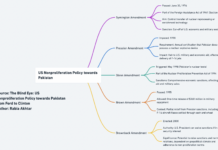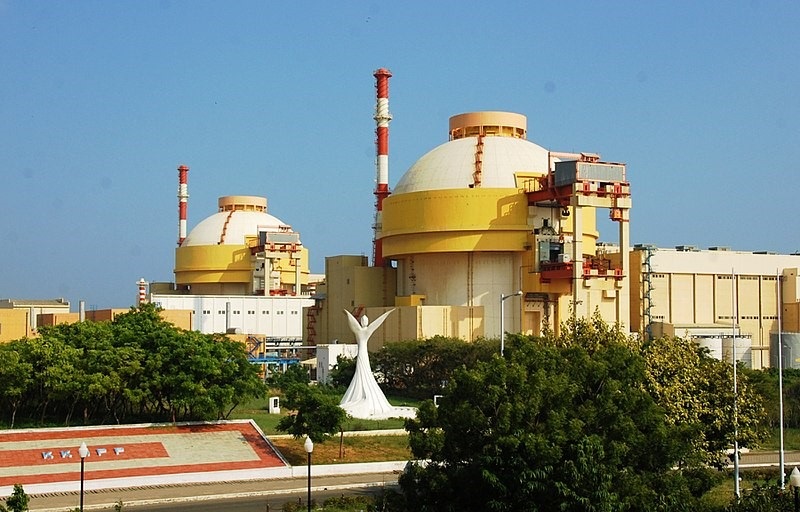Nidaa Shahid
Nuclear Suppliers Group (NSG) has remained in the thick of things in every discussion and analysis related to India in the past few years, ever since India formally applied to become a part of this export control cartel. Although at this point of time, an NSG membership remains a mere prestige booster for India after having secured a waiver from this group in 2008.The waiver has allowed India to enjoy the benefits of a membership without any of the restrictions.
The argument that the Indian pundits make most often is that without a seat at the NSG table, the future of nuclear power in India will remain hostage to the whims of the other suppliers who enjoy NSG membership. And since India is a fuel-deficient country, import of uranium from supplier states to fulfill its energy requirements is essential.
While going through the literature on India’s need for NSG membership, fuel/uranium deficiency appears as a reoccurring theme. This deficiency requires it to make deals with different countries for uranium supply to keep the Indian energy program up and running. It might be worth investigating just how deficient India really is in uranium to understand its NSG membership bid and to also understand any other aspirations it may have. It is important to keep in mind that India already has numerous deals with supplier states for nuclear fuel and power reactors, enabled by the 2008 NSG waiver. These countries include U.S., France, Japan, Russia, Mongolia, Kazakhstan, Argentina, and Namibia among others.
Let us talk about uranium numbers in India. The Uranium Corporation of India (UCIL) operates uranium mines at five locations, to include Jadugora, Bhatin, Narwapahar, Turamdih and Banduhurang .Extensive uranium reserves have also been found in the state of Andhra Pradesh.
In 2016, Indian Minister Jitendra Singh, in a statement to the Indian parliament, said that the Indian Atomic Minerals Directorate for Exploration and Research (AMD) had established that till Oct 2014 India had 181,606 tonnes of Uranium resources and 11.93 million tonnes of monazite resources, which contained about 1.07 million tonnes of Thorium dioxide (ThO2). India already has plans in place to explore the possibility of using its vast reserves of thorium as fuel for its energy program, thus, freeing up even more of its uranium reserves . For what purpose they are trying to free up more of their uranium reserves, while making deals with international uranium suppliers as well, does not need any more explanation than a look at the Indian military nuclear program. More on that subsequently.
Just last year, in Jun 2019, the Uranium Corporation of India (UCIL) announced thirteen new projects which will increase the production of uranium in India by over three times the present output. This move seems to be step one of the three-step plan to increase uranium production by tenfold over the next 15 years as outlined by Indian Minister Jitendra Singh to the Indian parliament in March 2018.
The question which arises here is that why — despite having vast reserves of indigenous uranium as well as plans to increase the uranium output tenfold in the next fifteen years — is India still vying to make deals with other countries for supply of uranium as well as aiming to get an NSG membership. The answer – as already alluded to briefly – becomes clear if one is to take a quick look at what India is doing on the military side of their nuclear program.
While India continues to make all efforts to secure uranium deals with other countries, its own indigenous supplies of uranium — which it is now trying to ramp up even more — are becoming increasingly freed up for military uses. Additionally, from recent studies on Indian fissile materials (uranium as well as its by-product plutonium) it appears that India has employed a clever plan to use even the internationally supplied safeguarded fissile material for its unsafeguarded program. The 2016 Belfer Center Study on the three streams of the Indian nuclear program by Kalman A. Robertson and John Carlson outlines this Indian shiftiness.
The use of safeguarded nuclear materials in its unsafeguarded program could ultimately lead to the use of these materials for its military program without any penalty for the country, owing to how India has structured it overall nuclear program. Thus, India now seems to be in a position to breakout at unprecedented levels, which could make it one of the top three countries when it comes to fissile material production. Despite all these developments, interestingly, India is still not considered to be the fastest growing nuclear program in the world. That ‘honor’ continues to belong, ironically, to Pakistan despite the ever increasing asymmetry in fissile materials between the two countries.
The main asymmetry between Pakistan and India stems from the indigenous reserves of uranium and the number of fissile material production facilities in both countries. Currently, the fissile material production capacity disparity between Pakistan and India can be best understood by taking a look at the following comparison drawn by Dr Mansoor Ahmed in his 2017 study on the Indian Nuclear Exceptionalism.

India has had a head start in this regard and today clearly far outstrips Pakistan’s capability in fissile material production. Both civilian and military fissile material productions are at a much higher rate in India than in Pakistan. This means that Pakistan has been wrongly accused of being the fastest growing nuclear program in the world.
The Indian capability is largely underplayed by the western scholars, the assumption being that the Indian reactors are of poor quality and that they do not run on full capacity. It is interesting to note that the Indian Department of Atomic Energy has itself reported numerous times that the Indian reprocessing plants are running at a hundred percent capacity. So it seems that in order to gain the economic benefits of a lucrative Indian market the western powers are willing to overlook the dangerous Indian designs, whereas, Pakistan’s legitimate concerns are more often than not overlooked and ostracized. There is a need to bring to light this duplicity of the western powers as well as the clever game that India seems to be playing to hype up the smokescreen of its uranium deficiency in order to gain NSG membership, and with it the prestige of a nuclear power state.
Nidaa Shahid is an Islamabad based researcher. She is a former research fellow of King’s College London, UK.

















